Thingiverse

Mages Guild (Fourth Edition Pocket-Tactics Update) by dutchmogul
by Thingiverse
Last crawled date: 3 years ago
This is an update of our old Mages Guild set for the new Fourth Edition Pocket-Tactics rules. If you printed that set for the third edition stuff, you can now use the units as a faction (or in custom builds) for the new stuff!
This set also introduces rules for spell cards which may be used in any custom force build that includes units with the Mage type.
We've set up a Patreon page for anyone who's interested in helping to fund us so we can keep making free and open sourced games like Pocket-Tactics, Wayfarer Tactics. and others, not to mention the growing catalog of gaming miniatures that you can use for whatever you want! (Psst... we take requests and commissions...)
Enjoy!
-------------------------------------------------RULES-------------------------------------------------------
For a standard 50 point build you'll want to build using a combination of units and spell cards. For a starting build, consider the following: Guild Initiate x1, Guild Apprentice x1, Guild Mage x1, Guild Guard x1, Grand Librarian x1 (totaling 32 points + 18 points worth of spell cards, Stonework tile x4, Water tile x2. The Fortress, Ruins, or Township features are good tactical/thematic choices for this build.
Inverted-color images of the rules cards are available here, here, here, and here if you want something a little less ink-intensive.
SETTING UP
To begin, each player builds a force by selecting a number of units that total 50 points or less. For a larger game, you and your opponent could agree on a higher point total.
Next, each player chooses 6 tiles and all of the tiles are dropped into a bag and shuffled. Then, players agree (randomly, if you choose) on a “central feature” tile and then each choose a feature for themselves. (features are the 3-dimensional tiles such as Forest, Highlands, Villages, et cetera). Draw a single tile from the bag and place the central feature into that tile. Rolling off to see who goes first, players take turns drawing tiles from the bag and placing them adjacent to one another in whatever configuration they wish. Once all of the tiles have been placed, each player (in turn order decided by the roll-off) places their chosen feature so that it is both as many tiles away from the center and from one another as possible.
Once the map has been generated, players place up to three units of their choice (as many as they can fit) either in or adjacent to their chosen feature using the rolled-off turn order. You may only ever have a single unit occupy a tile or feature. Once this is finished, game play begins starting with the last player to place their units.
PLAYING THE GAME
Each turn, a player may either move one of their units, use one of their units to assault an enemy unit, or deploy a new unit onto the map.
MOVING: When activating a unit to move, they may do so into any unoccupied tile adjacent to them. If an allied unit is in an adjacent tile, the moving unit may “hop” over that unit to get to an open tile adjacent to their ally. A unit may only hop a single ally per move. Some features (Forests, Highlands, Villages, et cetera) have special movement considerations that will be listed on their rules card. Spaces that do not contain a tile may not be moved into.
SWIFT UNITS: Units with this symbol on their rules card may perform a number of bonus moves equal to the numeric value listed to the side when they are activated to move.
FLYING UNITS: Units with this symbol on their rules card may perform a number of bonus moves equal to the numeric value listed to the side when they are activated to move and may hop over enemy units as though they were allies when doing so.
ASSAULTS: When activating a unit to assault an adjacent enemy, each player tests their units Offense (OFF) by rolling their red dice and defense (DEF) by rolling their blue dice. A unit will have between zero and three of each kind of dice as shown on their rules cards. The assault occurs in three phases:
Roll Phase- All dice are rolled simultaneously.
Bump Phase- Some units have “bumps,” a numeric value with a + listed under either their OFF or DEF dice. Starting with the player initiating the assault, each player may take turns using a single bump. Each bump may adjust a single die result (either OFF or DEF) up by its value (though a single die may not go higher than 6). Some units may have multiple bump values listed under their dice or granted by special abilities or terrain effects.
Re-Roll Phase- Starting with the player initiating the assault, each player takes turns using any re-rolls they are afforded, either by special abilities or terrain/unit placement. Each re-roll allows the player to re-roll one of their die results (OFF or DEF). A unit that has adjacent allies is benefiting from “support” and gains one re-roll per ally. A unit also gains a single re-roll when occupying their “favored terrain” (a terrain tile or feature that is shown on their rules card).
Tally Phase- Each player checks their OFF results and checks them against the opponent's DEF results. Starting with the highest OFF die, compare it to the highest enemy DEF die. If the results are a tie, move on to the next highest. If a single OFF die can't be matched or beat by value from the enemy's DEF, that enemy is “defeated” and is removed from the map and placed in the victorious player's captures (a space to the side of the map on that player's side). If the OFF cannot beat the enemy DEF values, that unit is safe. Note that, because all dice are rolled at once, it is possible for both units to defeat one another simultaneously.
RANGED ATTACKS: Units with this symbol on their rules card may make assaults against units that are an extra number of tiles away equal to the numeric value listed to the side. Count through the closest route to get to the target before making a ranged assault. Features and enemy units block line of sight (except when a Flying unit is targeted or is making the assault) and empty spaces (spaces without a tile) always block line of sight. If a unit being assaulted is not capable of meeting the range requirements to the attacker, they may not roll their OFF dice for that assault.
DEPLOYMENT: In place of activating one of your units already on the map, you may choose a unit from your reserves (any of the units you didn't put on the map at the start of the game that haven't been captured by enemies) and place them adjacent to any feature on the map that you control (provided the space is unoccupied). If no such tile exists, you may not deploy a unit until one opens up.
Any player may, in place of performing a regular move action, move a piece into an occupied feature tile to return that unit to reserves. Similarly, a unit that is occupying a feature may move into that feature to return to reserves, though you then cede control of the feature by doing so.
TYPES
Listed directly beneath a unit's name are a number of “types” (Human, Elf, Robot, et cetera). These types have no effect on their own, though are referenced by certain abilities and terrain effects that may either be beneficial or detrimental to the unit.
HAZARDS
Some terrain tiles and features contain hazards. These are special effects that occur when a unit is moved into that tile. Units that are deployed into a tile with hazard effects ignore them, as do units that have that tile type as their favored terrain.
WATER: A unit moving into a Water tile must succeed at a DV 5 DEF test or be defeated immediately after doing so.
If a feature is placed in a terrain tile, the tile counts as that feature rather than the terrain type, and therefore negates any hazard effects native to the terrain type.
VICTORY CONDITIONS
A player achieves victory as soon as their opponent (or opponents) cannot activate or deploy any units. Alternately, victory is secured the moment any single player controls all features on the map.
USING SPELL CARDS
When using spell cards in your force, each card selected is subtracted from your force point total. For example, if your are including the Fireball spell (which costs 2 points as indicated at the bottom of the card) in a standard 50-point force, it takes up 2 of those 50 points. You may use any number of spell cards in your force build provided you can afford their point cost and may use duplicates of the same spell if you like.
At the start of the game, shuffle all of your spell cards into a deck, then draw up to five of them. At the start of each turn, you may draw back up to five if you have less than five cards in your hand. You may not have more than five cards in your hand at any time.
Any unit with the Mage type may use spell cards, following the instructions when doing so. After a spell card has been used, place it in a discard pile designated to the side of the deck. Discarded cards may not be used again (except with the use of special abilities like the 'Grand Grimoire' ability possessed by the Archmage).
This set also introduces rules for spell cards which may be used in any custom force build that includes units with the Mage type.
We've set up a Patreon page for anyone who's interested in helping to fund us so we can keep making free and open sourced games like Pocket-Tactics, Wayfarer Tactics. and others, not to mention the growing catalog of gaming miniatures that you can use for whatever you want! (Psst... we take requests and commissions...)
Enjoy!
-------------------------------------------------RULES-------------------------------------------------------
For a standard 50 point build you'll want to build using a combination of units and spell cards. For a starting build, consider the following: Guild Initiate x1, Guild Apprentice x1, Guild Mage x1, Guild Guard x1, Grand Librarian x1 (totaling 32 points + 18 points worth of spell cards, Stonework tile x4, Water tile x2. The Fortress, Ruins, or Township features are good tactical/thematic choices for this build.
Inverted-color images of the rules cards are available here, here, here, and here if you want something a little less ink-intensive.
SETTING UP
To begin, each player builds a force by selecting a number of units that total 50 points or less. For a larger game, you and your opponent could agree on a higher point total.
Next, each player chooses 6 tiles and all of the tiles are dropped into a bag and shuffled. Then, players agree (randomly, if you choose) on a “central feature” tile and then each choose a feature for themselves. (features are the 3-dimensional tiles such as Forest, Highlands, Villages, et cetera). Draw a single tile from the bag and place the central feature into that tile. Rolling off to see who goes first, players take turns drawing tiles from the bag and placing them adjacent to one another in whatever configuration they wish. Once all of the tiles have been placed, each player (in turn order decided by the roll-off) places their chosen feature so that it is both as many tiles away from the center and from one another as possible.
Once the map has been generated, players place up to three units of their choice (as many as they can fit) either in or adjacent to their chosen feature using the rolled-off turn order. You may only ever have a single unit occupy a tile or feature. Once this is finished, game play begins starting with the last player to place their units.
PLAYING THE GAME
Each turn, a player may either move one of their units, use one of their units to assault an enemy unit, or deploy a new unit onto the map.
MOVING: When activating a unit to move, they may do so into any unoccupied tile adjacent to them. If an allied unit is in an adjacent tile, the moving unit may “hop” over that unit to get to an open tile adjacent to their ally. A unit may only hop a single ally per move. Some features (Forests, Highlands, Villages, et cetera) have special movement considerations that will be listed on their rules card. Spaces that do not contain a tile may not be moved into.
SWIFT UNITS: Units with this symbol on their rules card may perform a number of bonus moves equal to the numeric value listed to the side when they are activated to move.
FLYING UNITS: Units with this symbol on their rules card may perform a number of bonus moves equal to the numeric value listed to the side when they are activated to move and may hop over enemy units as though they were allies when doing so.
ASSAULTS: When activating a unit to assault an adjacent enemy, each player tests their units Offense (OFF) by rolling their red dice and defense (DEF) by rolling their blue dice. A unit will have between zero and three of each kind of dice as shown on their rules cards. The assault occurs in three phases:
Roll Phase- All dice are rolled simultaneously.
Bump Phase- Some units have “bumps,” a numeric value with a + listed under either their OFF or DEF dice. Starting with the player initiating the assault, each player may take turns using a single bump. Each bump may adjust a single die result (either OFF or DEF) up by its value (though a single die may not go higher than 6). Some units may have multiple bump values listed under their dice or granted by special abilities or terrain effects.
Re-Roll Phase- Starting with the player initiating the assault, each player takes turns using any re-rolls they are afforded, either by special abilities or terrain/unit placement. Each re-roll allows the player to re-roll one of their die results (OFF or DEF). A unit that has adjacent allies is benefiting from “support” and gains one re-roll per ally. A unit also gains a single re-roll when occupying their “favored terrain” (a terrain tile or feature that is shown on their rules card).
Tally Phase- Each player checks their OFF results and checks them against the opponent's DEF results. Starting with the highest OFF die, compare it to the highest enemy DEF die. If the results are a tie, move on to the next highest. If a single OFF die can't be matched or beat by value from the enemy's DEF, that enemy is “defeated” and is removed from the map and placed in the victorious player's captures (a space to the side of the map on that player's side). If the OFF cannot beat the enemy DEF values, that unit is safe. Note that, because all dice are rolled at once, it is possible for both units to defeat one another simultaneously.
RANGED ATTACKS: Units with this symbol on their rules card may make assaults against units that are an extra number of tiles away equal to the numeric value listed to the side. Count through the closest route to get to the target before making a ranged assault. Features and enemy units block line of sight (except when a Flying unit is targeted or is making the assault) and empty spaces (spaces without a tile) always block line of sight. If a unit being assaulted is not capable of meeting the range requirements to the attacker, they may not roll their OFF dice for that assault.
DEPLOYMENT: In place of activating one of your units already on the map, you may choose a unit from your reserves (any of the units you didn't put on the map at the start of the game that haven't been captured by enemies) and place them adjacent to any feature on the map that you control (provided the space is unoccupied). If no such tile exists, you may not deploy a unit until one opens up.
Any player may, in place of performing a regular move action, move a piece into an occupied feature tile to return that unit to reserves. Similarly, a unit that is occupying a feature may move into that feature to return to reserves, though you then cede control of the feature by doing so.
TYPES
Listed directly beneath a unit's name are a number of “types” (Human, Elf, Robot, et cetera). These types have no effect on their own, though are referenced by certain abilities and terrain effects that may either be beneficial or detrimental to the unit.
HAZARDS
Some terrain tiles and features contain hazards. These are special effects that occur when a unit is moved into that tile. Units that are deployed into a tile with hazard effects ignore them, as do units that have that tile type as their favored terrain.
WATER: A unit moving into a Water tile must succeed at a DV 5 DEF test or be defeated immediately after doing so.
If a feature is placed in a terrain tile, the tile counts as that feature rather than the terrain type, and therefore negates any hazard effects native to the terrain type.
VICTORY CONDITIONS
A player achieves victory as soon as their opponent (or opponents) cannot activate or deploy any units. Alternately, victory is secured the moment any single player controls all features on the map.
USING SPELL CARDS
When using spell cards in your force, each card selected is subtracted from your force point total. For example, if your are including the Fireball spell (which costs 2 points as indicated at the bottom of the card) in a standard 50-point force, it takes up 2 of those 50 points. You may use any number of spell cards in your force build provided you can afford their point cost and may use duplicates of the same spell if you like.
At the start of the game, shuffle all of your spell cards into a deck, then draw up to five of them. At the start of each turn, you may draw back up to five if you have less than five cards in your hand. You may not have more than five cards in your hand at any time.
Any unit with the Mage type may use spell cards, following the instructions when doing so. After a spell card has been used, place it in a discard pile designated to the side of the deck. Discarded cards may not be used again (except with the use of special abilities like the 'Grand Grimoire' ability possessed by the Archmage).
Similar models
thingiverse
free

Freespace Privateers (Fourth Edition Pocket-Tactics Update) by dutchmogul
...occupied feature tile to return that unit to reserves. similary, a unit that is occupying a feature may move...
thingiverse
free

Cybernetic Liberation Front (Fourth Edition Pocket-Tactics Update) by dutchmogul
...occupied feature tile to return that unit to reserves. similary, a unit that is occupying a feature may move...
thingiverse
free

Quanar Night Cult (Fourth Edition Pocket-Tactics Update) by dutchmogul
...occupied feature tile to return that unit to reserves. similary, a unit that is occupying a feature may move...
thingiverse
free

Pocket-Tactics: Fantasy Personalities (Fourth Edition/Wave 1) by dutchmogul
...occupied feature tile to return that unit to reserves. similary, a unit that is occupying a feature may move...
thingiverse
free

Pocket-Tactics: Nine Worlds Personalities (Wave 1/Fourth Edition) by dutchmogul
...occupied feature tile to return that unit to reserves. similary, a unit that is occupying a feature may move...
thingiverse
free

Pocket-Tactics: Core Set 1 (Fourth Edition) by dutchmogul
...occupied feature tile to return that unit to reserves. similary, a unit that is occupying a feature may move...
thingiverse
free

Pocket-Tactics: Core Set 6 (Fourth Edition) by dutchmogul
...occupied feature tile to return that unit to reserves. similary, a unit that is occupying a feature may move...
thingiverse
free

Pocket-Tactics: Core Set 7 (Fourth Edition) by dutchmogul
...occupied feature tile to return that unit to reserves. similary, a unit that is occupying a feature may move...
thingiverse
free

Pocket-Tactics: Core Set 2 (Fourth Edition) by dutchmogul
...occupied feature tile to return that unit to reserves. similary, a unit that is occupying a feature may move...
thingiverse
free

Pocket-Tactics: Core Set 3 (Fourth Edition) by dutchmogul
...occupied feature tile to return that unit to reserves. similary, a unit that is occupying a feature may move...
Guild
3d_export
$5

logo the guild of food writers
...logo the guild of food writers
3dexport
logo the guild of food writers
3ddd
$1

ткани Designer Guild
...ткани designer guild
3ddd
5 текстур
turbosquid
$1

Adventurers Guild Building
...dventurers guild building for download as blend, fbx, and obj on turbosquid: 3d models for games, architecture, videos. (1586726)
turbosquid
$25

CP419 GUILDED ARMCHAIR
... available on turbo squid, the world's leading provider of digital 3d models for visualization, films, television, and games.
3ddd
$1

Подушки Designers Guild Varese Marine
...подушки designers guild varese marine
3ddd
подушка
designers guild varese marine cushion - 60x45cm
turbosquid
$5

Holly Hunt Guild Sofa
...olly hunt guild sofa for download as 3ds, obj, fbx, and blend on turbosquid: 3d models for games, architecture, videos. (1148640)
turbosquid
free

Guild Wars Game Box
... available on turbo squid, the world's leading provider of digital 3d models for visualization, films, television, and games.
turbosquid
$18

Designers Guild Nilaruna Silver Birch
... available on turbo squid, the world's leading provider of digital 3d models for visualization, films, television, and games.
3d_export
$9

Low-poly cartoon fairy tail guild building
...preview images were rendered in blender 3d (cycles; 1024 samples)<br>materials: 6<br>vertices: 22299; polygons: 16856
3ddd
$1

John Richard 65" Water Guilded Floor Lamp
...5"h water gilded floor lamp
product specifications
sold by
the classy cottage
category
floor lamps
style
contemporary
Dutchmogul
thingiverse
free

Castleflower by dutchmogul
...dutchmogul
castles designed by: william the conqueror
flowers designed by: (hotly contested)
hand model: dutchmogul
-for leanne
thingiverse
free

Dreidel by dutchmogul
...dreidel by dutchmogul
thingiverse
happy hanukkah!
thingiverse
free

UFOrnament by dutchmogul
...ufornament by dutchmogul
thingiverse
abducto the alien is here to make your holidays out of this world!
thingiverse
free

Dragon Ornament by dutchmogul
...dragon ornament by dutchmogul
thingiverse
happy holidays!
thingiverse
free

Toychest Ornament by dutchmogul
...toychest ornament by dutchmogul
thingiverse
-dedicated to adeline
thingiverse
free
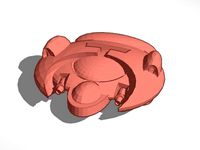
The Nemesis by dutchmogul
...he nemesis by dutchmogul
thingiverse
this thing was made with tinkercad. edit it online https://tinkercad.com/things/caqz8dryy8k
thingiverse
free

The Roosevelt by dutchmogul
... roosevelt by dutchmogul
thingiverse
this thing was made with tinkercad. edit it online https://tinkercad.com/things/awstwh2ksfy
thingiverse
free
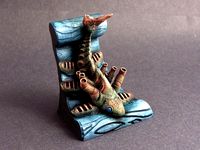
Steamed Fish by dutchmogul
...steamed fish by dutchmogul
thingiverse
designed in sculptris and tinkercad.
thingiverse
free

Chest inspired by dutchmogul's Barrel by qubist
...chest inspired by dutchmogul's barrel by qubist
thingiverse
a chest matching dutchmogul's barrel
thingiverse
free

Words of Wisdom by dutchmogul
...ountain and achieve "enlightenment."
be sure and check the instructions to see print quantities. enjoy!
-dutchmogul
Mages
turbosquid
$30

mage
... available on turbo squid, the world's leading provider of digital 3d models for visualization, films, television, and games.
turbosquid
$1

Mage
... available on turbo squid, the world's leading provider of digital 3d models for visualization, films, television, and games.
turbosquid
$5

Mage Building
...squid
royalty free 3d model mage building for download as ma on turbosquid: 3d models for games, architecture, videos. (1562833)
turbosquid
$4

Mage Obelisk
...osquid
royalty free 3d model mage obelisk for download as ma on turbosquid: 3d models for games, architecture, videos. (1562831)
turbosquid
$4

Mage Pyramid
...osquid
royalty free 3d model mage pyramid for download as ma on turbosquid: 3d models for games, architecture, videos. (1562824)
3d_export
$10

Clown Mage
...clown mage
3dexport
turbosquid
$100

Mage Necromancy
... available on turbo squid, the world's leading provider of digital 3d models for visualization, films, television, and games.
turbosquid
$50

Child Mage
... available on turbo squid, the world's leading provider of digital 3d models for visualization, films, television, and games.
turbosquid
$45

Skeleton Mage
...n mage for download as unitypackage, blend, obj, fbx, and dae on turbosquid: 3d models for games, architecture, videos. (1632588)
turbosquid
$15

Cartoon Mage
... available on turbo squid, the world's leading provider of digital 3d models for visualization, films, television, and games.
Fourth
3d_export
$18

meteor dragon purgatory-fourth dragon bone
...meteor dragon purgatory-fourth dragon bone
3dexport
meteor dragon purgatory-fourth dragon bone<br>3ds max 2015
3d_export
$18

meteorite purgatory-fourth dragon bone 02
...meteorite purgatory-fourth dragon bone 02
3dexport
meteorite purgatory-fourth dragon bone 02<br>3ds max 2015
3d_export
$25

The destroyer of the forts the modified frigate 3D Model
...3d model 3dexport frigate ship war battle clipper gun fourth warship sailboat sail frigate with the increased quantity and...
3d_export
$5

combat fighter mig 31
...fighter mig 31 3dexport the mig-31 was the first fourth generation soviet combat aircraft. developed in the 1970s, this...
3d_export
$220

HMS Leopard 3D Model
...leopard ship historical war battle clipper british 50 gun fourth rate warship sailboat sail galleon chesapeake hms leopard 3d...
3d_export
$99

Infiniti M 2011 3D Model
...infiniti y51 2011 2012 2013 2014 4-door sedan saloon fourth generation infinity japanese nissan fuga executive luxury infiniti m...
3d_export
$99

Chrysler Imperial LeBaron 4door Hardtop 1971 3D Model
...3d model 3dexport imperial lebaron chrysler hardtop 1971 1969-1973 fourth generation full-size imperial by chrysler imperial lebaron 4door hardtop...
3d_export
$99

Nissan Pathfinder 2013 3D Model
...2014 2015 2016 japan full-size crossover 4-door concept japanese fourth generation nissan pathfinder 2013 3d model humster3d 59451...
3d_export
$99

Nissan Altima 2012 3D Model
...2015 4-door sedan saloon family japan japanese l32 mid-size fourth generation nissan altima 2012 3d model humster3d 52028...
3d_export
$99

Nissan Altima coupe 2012 3D Model
...2014 2015 2-door coupe family japan japanese l32 mid-size fourth generation nissan altima coupe 2012 3d model humster3d 55381...
Tactics
3d_export
$10

Tactical 3D Model
...tactical 3d model
3dexport
tactical
tactical 3d model alphamodeling 86175 3dexport
turbosquid
$20

Tactical bezel
...uid
royalty free 3d model tactical bezel for download as max on turbosquid: 3d models for games, architecture, videos. (1212612)
turbosquid
$16

Tactical Knife
...d
royalty free 3d model tactical knife for download as blend on turbosquid: 3d models for games, architecture, videos. (1323333)
turbosquid
$13

Tactical Craftsman
...
royalty free 3d model tactical craftsman for download as obj on turbosquid: 3d models for games, architecture, videos. (1310601)
turbosquid
$10

Tactical Machete
...d
royalty free 3d model tactical machete for download as fbx on turbosquid: 3d models for games, architecture, videos. (1566754)
turbosquid
$4

Grenade (Tactical)
...
royalty free 3d model grenade (tactical) for download as ma on turbosquid: 3d models for games, architecture, videos. (1561734)
turbosquid
$2

Tactical Axe
...osquid
royalty free 3d model tactical axe for download as ma on turbosquid: 3d models for games, architecture, videos. (1210537)
turbosquid
$1

tactical knife
...uid
royalty free 3d model tactical knife for download as fbx on turbosquid: 3d models for games, architecture, videos. (1406785)
turbosquid
$30

handgun Tactical
...oyalty free 3d model usp tactical for download as obj and fbx on turbosquid: 3d models for games, architecture, videos. (1438618)
turbosquid
$10

Tactical rifle
...alty free 3d model tactical rifle for download as max and obj on turbosquid: 3d models for games, architecture, videos. (1228999)
3d_export
$12

pocket stove
...pocket stove
3dexport
pocket stove
3d_ocean
$6

Pocket Watch
...calendar chain clock gear gold golden jewelry luxury old-fashioned pocket pocket watch time watch
pocket watch on a 2009 calendar
3d_export
$5

Pocket Watch
...pocket watch
3dexport
pocket watch old style
3d_ocean
$15

pocket watch
... calendar chain clock gear gold golden jewelry luxury old-fashioned pocket pocket watch time watch
high poly ancient pocket watch
3d_export
$8

Pocket watch
...pocket watch
3dexport
pocket watch with a photo of new york in the 1900s
turbosquid
$5

Pocket flashlight
...uid
royalty free 3d model pocket flashlight for download as on turbosquid: 3d models for games, architecture, videos. (1271804)
3d_export
free

Pocket flashlight
...this is a 3d model of a pocket flashlight. it is quite realistic and you can add this model to your project and enjoy the result.
archive3d
free

Pocket 3D Model
...e3d
bag pocket paper bag
pocket n040608 - 3d model (*.gsm+*.3ds) for interior 3d visualization.
turbosquid
$29

Pocket Watch
...squid
royalty free 3d model pocket watch for download as max on turbosquid: 3d models for games, architecture, videos. (1346695)
turbosquid
$20

Pocket Watch
...squid
royalty free 3d model pocket watch for download as c4d on turbosquid: 3d models for games, architecture, videos. (1352289)
Update
turbosquid
$5

orthographic room (updated)
...ee 3d model orthographic room (updated) for download as blend on turbosquid: 3d models for games, architecture, videos. (1375451)
turbosquid
$95

Romantic Bedroom - Updated
... available on turbo squid, the world's leading provider of digital 3d models for visualization, films, television, and games.
turbosquid
$39
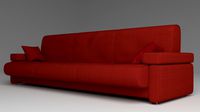
Sofa. Updated release
... available on turbo squid, the world's leading provider of digital 3d models for visualization, films, television, and games.
turbosquid
$15

Procedurally updating cartoon crystal
...l procedurally updating cartoon crystal for download as blend on turbosquid: 3d models for games, architecture, videos. (1525853)
3d_export
$5
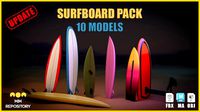
10 Surfboard s UPDATE
...10 surfboard s update
3dexport
3d_export
$10
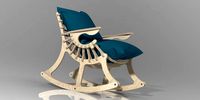
chair updated rocking
...chair updated rocking
3dexport
armchair renewed plywood 18 mm. for cnc machines. layout in the stp archive.
turbosquid
free

Marble Table Updated
...el marble table for download as 3ds, obj, fbx, blend, and dae on turbosquid: 3d models for games, architecture, videos. (1201300)
turbosquid
$35
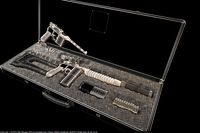
Mauser 1930the model is updated with the kits
... available on turbo squid, the world's leading provider of digital 3d models for visualization, films, television, and games.
turbosquid
$145

Contemporary Bedroom Collection Vol 1 - Updated
... available on turbo squid, the world's leading provider of digital 3d models for visualization, films, television, and games.
turbosquid
$16

B&B Mart Armchair MPRN (Updated)
...art armchair mprn (updated) for download as max, obj, and fbx on turbosquid: 3d models for games, architecture, videos. (1284355)
Edition
turbosquid
$33
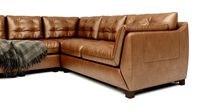
Natuzzi Editions
... available on turbo squid, the world's leading provider of digital 3d models for visualization, films, television, and games.
turbosquid
$29

Guitar_MJ-Edition
... available on turbo squid, the world's leading provider of digital 3d models for visualization, films, television, and games.
turbosquid
$20
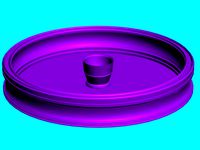
Editable Fountain
... available on turbo squid, the world's leading provider of digital 3d models for visualization, films, television, and games.
3ddd
$1
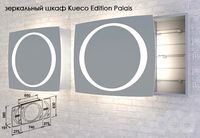
Kueco Edition Palais
...kueco edition palais
3ddd
keuco
зеркальный шкаф kueco edition palais
design_connected
$16
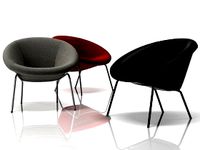
369 Classic Edition
...369 classic edition
designconnected
walter knoll 369 classic edition computer generated 3d model.
3ddd
$1
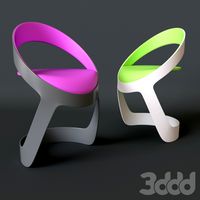
Martz Edition
...martz edition
3ddd
martzedition
http://www.martzedition.com/a-500-3
3ddd
$1

Martz Edition
...martz edition
3ddd
martzedition
http://www.martzedition.com/b-400-3
design_connected
$25
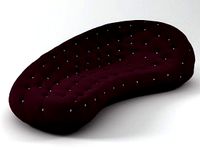
Chester - Limited Edition
...nnected
established & sons chester - limited edition computer generated 3d model. designed by future systems, amanda levete.
3ddd
$1
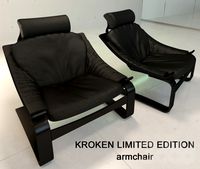
KROKEN LIMITED EDITION
...d
rochebobois
autumn/winter collections 2012 rochebobois paris
kroken limited edition armchairhttp://m.roche-bobois.com
3ddd
$1
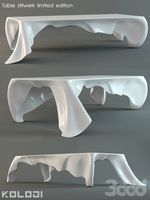
stilwerk limited edition
...stilwerk limited edition
3ddd
3000х1200х750
